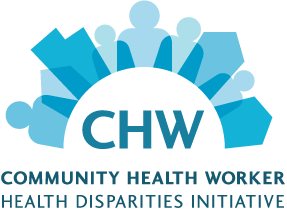Project Concern International (PCI)
In the patient model, clinic staff and community health workers (CHW) identified individuals with or at risk of heart disease and invited them to participate in the community education at their clinic.
Care groups were formed by clustering up to 20 individuals from several households located in the same or proximate neighborhoods.
In the Health Window approach, daily presentations were given using selected session exercises appropriate for the environment that were deployed in the Mexican consulate waiting room.
Location:
San Diego, CA
Intended Population:
Filipino American and Hispanic/Latino populations
Curricula Used:
Healthy Heart, Healthy Family: A Community Health Worker’s Manual for the Filipino Community and Your Heart, Your Life: A Community Health Worker’s Manual for the Hispanic Community
Key Partners:
La Maestra Community Health Center, Institute of Human Development with San Diego City College, PCI&rsqou;s Family Health Navigator Resource Center, Ventanilla de Salud program
CVD Burden:
The population that this project served, which included predominantly Filipino American, other Asian, and Hispanic/Latino residents, have high hospitalization rates for coronary heart disease (CHD). For example, stroke mortality rates were nearly 20 percent higher in areas that PCI and the associated clinics cover than in the overall county. Hispanic residents within the coverage areas had disproportionately high rates of CHD, hospitalizations, and emergency room visits compared with Hispanics in other regions of the county. Rates of CHD death were also disproportionately high for Asians and Pacific Islanders in the PCI and clinic coverage areas.1
Implementation:
PCI offered two types of community health worker (CHW) trainings: The first training modality was a 2-day in-person training. The second was a self-paced, online training developed to include interactive components, including videos from fellow Strategic Champions NYU CSAAH and MSM as well as other adult learning techniques. PCI trained a total of 127 CHWs, of whom 84 were trained via the in-person modality and 43 completed the online training.
PCI implemented the program in the community using two primary models:
- Medium-intensity Care Groups that met 2 hours a week over 6 weeks and
- Low-intensity delivery of key curriculum messages via 10- to 20-minute presentations at the Ventanilla de Salud Health Window at the Mexican consulate.
At least 14 community Care Groups were established by PCI-trained CHWs, reaching 326 people. La Maestra provided individual heart health education sessions to 279 patients at their clinic site. Tablet computers were used in the clinic setting to assist with the delivery of curriculum related content and messaging. The CHWs at the Ventanilla de Salud program at the Mexican consulate reached 8,968 persons with key messages and handouts from the NHLBI curriculum. Of these, 170 persons received referrals to agencies for help with chronic disease related issues or to establish a medical home.
Evaluation:
PCI used the NHLBI’s evaluation forms to assess changes in heart health knowledge, attitudes, and beliefs for the CHWs and community members. In addition, PCI and its partners conducted post-training key-informant interviews and focus groups with trainers, managers, and CHWs. PCI collected and assessed data from the Web-based trainings.
1 County of San Diego, Health & Human Services Agency, Public Health Services, Community Health Statistics Unit. (2013, June). County of San Diego community profiles, non-communicable (chronic) disease profile by region and subregional area (SRA).  (PDF, 3.2 MB) San Diego, CA: County of San Diego.
(PDF, 3.2 MB) San Diego, CA: County of San Diego.
Last Updated: June 2014






